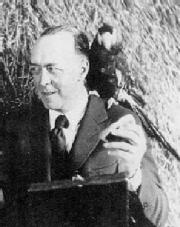The Echo of Burroughs
Edgar Rice Burroughs (1875-1950) was a prolific writer of the early SF pulp era. His stories of jungle orphan Tarzan became a global phenomenon, while those of Mars and Venus effectively created the science fiction sub-genre of planetary romance, telling compelling adventure, mystery and love stories amongst wild and richly populated landscapes.
But why, more than seventy years after his death, is Burroughs still relevant and what echoes reverberate through science and science fiction?
Barsoom
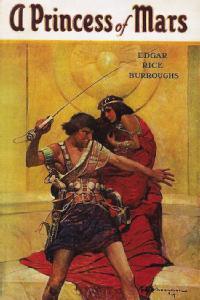 Originally from Chicago, and later California, Burroughs was born into an America still reeling from its civil war, and still in the process of developing its own mythologies. Like his contemporary, creator of Oz L. Frank Baum, Burroughs chose to place an American protagonist in a fantasy world. Unlike Baum’s child hero Dorothy, Burroughs’ John Carter was an adult veteran of the American Civil War. And unlike the magic of Oz, Burrough’s vision of Mars - Barsoom - was a world of scientific masterminds and technology, as well as violence, honour and mystery. Starting with A Princess of Mars (stories 1912, novel 1917), Burroughs wrote 11 novels or story collections set on Barsoom, each exploring its five different sentient humanoid species and a world which was shown as barren, dry and in decline - in keeping with then current astronomical theories. Unfortunately, these ideas rapidly became less tenable as the twentieth century went on, and were antiquated well before the final work was published around 1941 [1].
Originally from Chicago, and later California, Burroughs was born into an America still reeling from its civil war, and still in the process of developing its own mythologies. Like his contemporary, creator of Oz L. Frank Baum, Burroughs chose to place an American protagonist in a fantasy world. Unlike Baum’s child hero Dorothy, Burroughs’ John Carter was an adult veteran of the American Civil War. And unlike the magic of Oz, Burrough’s vision of Mars - Barsoom - was a world of scientific masterminds and technology, as well as violence, honour and mystery. Starting with A Princess of Mars (stories 1912, novel 1917), Burroughs wrote 11 novels or story collections set on Barsoom, each exploring its five different sentient humanoid species and a world which was shown as barren, dry and in decline - in keeping with then current astronomical theories. Unfortunately, these ideas rapidly became less tenable as the twentieth century went on, and were antiquated well before the final work was published around 1941 [1].
Indeed, Burroughs himself described his vision of Mars as being broadly scientifically-inspired, referencing astronomical evidence for irrigation of the Martian plains (from the then-hypothesised canals) and the observed surface changes on Mars in a letter to a newspaper in 1926 [2]. By that time, the majority of the scientific community had moved away from faith in canals, and the evidence for a very thin, oxygen-poor atmosphere was growing. Some prominent scientific voices, notably the disciples of the recently-deceased Percival Lowell, however, continued to push for the existence of an advanced Martian civilisation. As a result, and in keeping with these theories, Burroughs’ Barsoom has huge canals in place of now-retreated oceans, and vast machinery to try to replenish the atmosphere, as well as ancient cities, advanced medicine and flying machines.
While the Barsoom books are Burroughs’ best known science fiction, he wrote a second series of novels set on Venus, or Amtor to its natives, which was shown as a warm, vegetation-rich, watery world (again in keeping with contemporary scientific theory) and another in the hollow-Earth realm of Pellucidar (the inner world, while a common theme in popular culture, has never been scientifically plausible). These non-Barsoomian texts are interesting in their own right, although they’ve had a little less of a cultural impact than the famous Barsoom series.
Long before the end of Burroughs’ writing career, his work was both scientifically and culturally dated. The conditions on both Venus and Mars were already known to be harsher than he’d assumed (although final confirmation awaited interplanetary probe missions of the 1960s and 70s). What’s more the social assumptions (in terms of race, sex, class, violence etc) had also changed, and would change further over time, to the extent that the books are now a rather difficult read at times. However the first Barsoom novel A Princess of Mars was adapted as a blockbuster film, John Carter (dir. Stanton) as recently as 2012, and the series continues to be taught as part of university syllabuses looking at our relationship with the red planet. Perhaps as a result (directly or otherwise) of the interested attracted by John Carter, other references to Burroughs' work appears elsewhere around the same time - for example in the Doctor Who audio adventure "Voyage to Venus" (audio CD, 2012, written by Jonathan Morris for Big Finish Productions) where a floating cloud city on Venus is named Amtor after the Burroughs' world. James Cameron has acknowledged Burroughs as an important influence on his 2009 blockbuster film Avatar. Guidebooks and unauthorised sequels to the Barsoom series continue to be written. Certainly the echoes of Burroughs' work never seem to have entirely died away.
Science Fictional Echoes
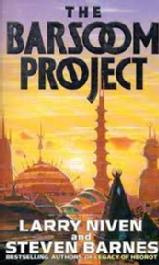 Memories of Burroughs’ Barsoom can be seen permeating twentieth century science fiction, with authors including Arthur C Clarke, Larry Niven and Ray Bradbury acknowledging the influence. Indeed Clarke imagined a fictional US air force project to explore public reactions to alien intelligence in 1989 called “Project Barsoom” as part of the backstory for his 2001: A Space Odyssey (1968), and in his novel with Stephen Baxter, Firstborn (2008), a character on Mars apologises "I'm only sorry we can't give you a vial of canal water. Or the tripod leg from a Martian fighting machine. Or an egg laid by a Princess." where the last of these references a characteristic of Burroughs' oviparous Barsoomians. Prominent science fiction author Niven (together with co-author Steven Barnes) entitled a novel The Barsoom Project (1989). This sequel to the same authors' Dream Park (1981) discusses a proposed colonization of Mars. The same theme was explored by Bradbury, who consciously wrote his The Martian Chronicles (1950) in the tradition of Burroughs’ planetary romances, knowing they were a fantasy when written, having already been ruled out by our improved scientific understanding of the red planet.
Memories of Burroughs’ Barsoom can be seen permeating twentieth century science fiction, with authors including Arthur C Clarke, Larry Niven and Ray Bradbury acknowledging the influence. Indeed Clarke imagined a fictional US air force project to explore public reactions to alien intelligence in 1989 called “Project Barsoom” as part of the backstory for his 2001: A Space Odyssey (1968), and in his novel with Stephen Baxter, Firstborn (2008), a character on Mars apologises "I'm only sorry we can't give you a vial of canal water. Or the tripod leg from a Martian fighting machine. Or an egg laid by a Princess." where the last of these references a characteristic of Burroughs' oviparous Barsoomians. Prominent science fiction author Niven (together with co-author Steven Barnes) entitled a novel The Barsoom Project (1989). This sequel to the same authors' Dream Park (1981) discusses a proposed colonization of Mars. The same theme was explored by Bradbury, who consciously wrote his The Martian Chronicles (1950) in the tradition of Burroughs’ planetary romances, knowing they were a fantasy when written, having already been ruled out by our improved scientific understanding of the red planet.
Charles Chilton, writing the carefully-plausible radio drama Journey Into Space: Operation Luna in 1953, also couldn’t resist a reference to the series, with his character Lemmy Barnett asking “What is it? Is there a red princess knocking on the door?” when roused from his sleep in episode 7. While the later Journey Into Space serials (The Red Planet and World in Peril) did not reference Burroughs directly, they are clearly written in the same planetary romance tradition of a dying world, with ancient ziggurat cities and vast canals. Prominent science fiction author Frederik Pohl went further, discussing the work of Burroughs in an article in an education journal and noting both his influence and how carefully Burroughs followed the then-current knowledge of Mars at the time of writing his early novels:
So it is Burroughs, I think, who first took seriously what astronomy had to say about the universe outside our own Earth, and attempted, quite seriously, to think how human beings could live there. (Pohl, F. (1976). "The Innovators". The Journal of General Education, 28(1), 43–49.)
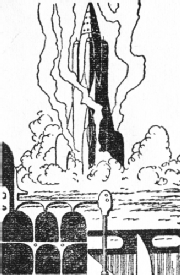 A handful of science fiction authors have written stories which involve Barsoom directly. Appearing in Future Science Fiction in 1956, Alfred Coppel’s short story “The Hills of Home” (text, audiobook) explores the psychology required of a pilot on the first, highly dangerous Martian landing. The selectee, Kimball (surely named for E E ‘Doc’ Smith’s lensman Kimball Kinnison), demonstrates a powerful imagination and sense of isolation from the reality of Earth, finding his spiritual home in the fantasies of Barsoom. As we’re told: “How many rocket pilots, he wondered, were weaned on Burroughs’ books?”
A handful of science fiction authors have written stories which involve Barsoom directly. Appearing in Future Science Fiction in 1956, Alfred Coppel’s short story “The Hills of Home” (text, audiobook) explores the psychology required of a pilot on the first, highly dangerous Martian landing. The selectee, Kimball (surely named for E E ‘Doc’ Smith’s lensman Kimball Kinnison), demonstrates a powerful imagination and sense of isolation from the reality of Earth, finding his spiritual home in the fantasies of Barsoom. As we’re told: “How many rocket pilots, he wondered, were weaned on Burroughs’ books?”
Written just a year later, the short story “It’s a Small Solar System” by Allan Howard (1957, Fantastic Universe, text, audiobook) makes the reverse suggestion - that the increasingly professional and prosaic demands of scientific space exploration left no time for such fantasies. The grandfather of one of the first crew to visit Mars laments that "I am glad the kid could go, but it is just a lark to him. He never had a 'sense of wonder.' How could he—nobody reads anymore". On their arrival at Mars, the lack becomes significant: no one aboard the ship (named Goddard after the rocket pioneer) recognises the Barsoomian character that greets them.
By the 1960s though, the tone of some writers becomes a little more wistful. “The Blonde from Barsoom” by Robert F Young (short story, 1962, Amazing Fact and Science Fiction, text) reads on one level as a parody, with a writer becoming absorbed by his far-from-disguised copies of Burroughs’ characters and with commentary on the quality of the associated dialogue. On another level, it’s a respectful pastiche - the writer defends his influences against critics - “A Burroughs influence, he had said, was an essential ingredient in the makeup of any science-fiction writer” - and there is an undeniable joy in the exuberant writing.
Making still more extensive use of Barsoom is science fiction writer Robert A Heinlein. In his later works, Heinlein began to bring his fictional worlds together, and to break down the barriers between different conceptions of reality. A key novel in this sequence is The Number of the Beast (1980). In this story, a family group - most of whom are actually named after Burroughs characters and share a common obsession for the Barsoom novels - find themselves on the run in an air-car called Gay Deceiver. Fitted with a dimension-jumping device, the artificially-intelligent Gay takes her crew not just into parallel Earths but also into fictionalised ones, including L Frank Baum’s Wonderful Land of Oz and, briefly, E E ‘Doc’ Smith’s Lensman universe. In the course of their journey, the crew attempt to reach the Barsoom that inspired their names, encountering only a steampunk-esque Edwardian-style Mars, but they are unable to find Barsoom without an invitation.
Interestingly, an earlier draft of this novel, written several years earlier but not published (likely due to copyright issues) was substantially different - enough so that it has recently been published in the US as a different novel in its own right, named The Pursuit of the Pankera (Heinlein, 2021). It shares the first third of its text with The Number of the Beast before continuing in a rather different direction. In this version, the dimension-hopping crew apparently do visit Barsoom itself and spend a significant fraction of the novel interacting with the characters there, in a version of Barsoom that has been opened up for a (one-sided) tourist trade with Earth. Gay is treated firmly as a computer rather than as self-aware. And there is also an extensive interaction with the Lensman universe. In common with other reviewers, I actually found this version stronger than the originally-published text. In particular it leans far less hard on Heinlein's Lazarus Long universe and other writings for its fictional crossovers (although Long appears under one of his pseudonyms), and has a better narrative structure overall.
Scientific Impact
The impact of Burroughs on science fiction was significant, but it could be argued that his influence on science was at least as much so. Indeed Burroughs’ Barsoom novels have been credited with two key impacts: the inspiration of public support for Mars exploration and the inspiration of individual scientists.
In a 2010 interview, Ray Bradbury is quoted as saying:
I've talked to more biochemists and more astronomers and technologists in various fields, who, when they were ten years old, fell in love with John Carter and Tarzan and decided to become something romantic. Burroughs put us on the moon. All the technologists read Burroughs. I was once at Caltech with a whole bunch of scientists and they all admitted it. Two leading astronomers—one from Cornell, the other from Caltech—came out and said, Yeah, that’s why we became astronomers. We wanted to see Mars more closely.
This assertion is supported by a range of other anecdotal evidence. Perhaps one of the most famous of professional astronomer science popularisers in the twentieth century was Carl Sagan. As professor in astrophysics at Harvard and Cornell, Sagan was an astrobiologist and planetary scientist, well known for developing the interstellar messaging carried on the Pioneer and Voyager probes, and later for his media appearances - primarily his incredibly influential 1980 television documentary series Cosmos. He spoke repeatedly of how he had been influenced by reading Burroughs at a young age. Indeed, a chapter in his 1974 popular science book The Cosmic Connection was entitled “The Moons of Barsoom” after the work of Burroughs and in it he described how “it was one phrase of his more than any other that captured my imagination: “the hurtling moons of Barsoom””. The chapter, of course, went on to describe the fast-moving Martian moons Phobos and Deimos.
Science fiction author and professional astronomer at the University of Wyoming, Mike Brotherton has also acknowledged the debt Burroughs as an early influence: “I started writing my first novel — something really terrible inspired by Edgar Rice Burroughs’s John Carter of Mars books — in sixth grade.”
Burroughs also inspired others involved in space sciences - the astronauts putting their own lives at risk. Astronaut Terrence Wilcutt, who flew on four shuttle missions, commanding two of them, has been quoted as saying that
"Edgar Rice Burroughs' stories ... are true classics.... everything I read in comics and books made me want a life of adventure. The people who write science-fiction stories are dreamers. They create the ideas from which scientists begin their search. ...
Science fiction is the material from which dreams begin their initial journey to reality. Without that first building block, we, as a nation, cannot advance and we would eventually stagnate. I would have never gone into space had it not been for someone in the past who one day wondered if space travel was possible -- that person dreamed the dream and I was very fortunate to be able to fulfill his dream from long ago."
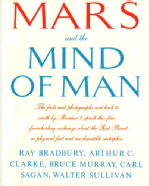 Another planetary scientist, Bruce C. Murray of NASA’s Jet Propulsion Laboratory (later its director, 1976-1982) was a leading researcher in the study of Mars in the 1960s and 70s. In 1971, he appeared in a televised discussion with Walter Sullivan, Arthur C Clarke, Carl Sagan and Ray Bradbury regarding the then-new Mariner 9 martian lander. Perhaps unsurprisingly given the previously-stated fondness of Clarke, Sagan and Bradbury for the work of Burroughs, the author's work came up for discussion, and the book based on the symposium, Mars and the Mind of Man (1971) also includes statements from Murray about how Burroughs’ writings had influenced his work. While, positioned as he was in the professional science advocacy role in the discussion, he had to sound notes of caution regarding the fantasies, he acknowledged their power:
Another planetary scientist, Bruce C. Murray of NASA’s Jet Propulsion Laboratory (later its director, 1976-1982) was a leading researcher in the study of Mars in the 1960s and 70s. In 1971, he appeared in a televised discussion with Walter Sullivan, Arthur C Clarke, Carl Sagan and Ray Bradbury regarding the then-new Mariner 9 martian lander. Perhaps unsurprisingly given the previously-stated fondness of Clarke, Sagan and Bradbury for the work of Burroughs, the author's work came up for discussion, and the book based on the symposium, Mars and the Mind of Man (1971) also includes statements from Murray about how Burroughs’ writings had influenced his work. While, positioned as he was in the professional science advocacy role in the discussion, he had to sound notes of caution regarding the fantasies, he acknowledged their power:
“On the other hand, the desire of the American people (who are paying the costs) to search for life on Mars has been high, and Viking is a logical translation of that desire into a space mission. I guess I would chalk up that desire and enthusiasm in the face of what I consider unpromising odds to Lowell and Edgar Rice Burroughs, and to Ray Bradbury and Arthur Clarke.” (pg 34).
Indeed, NASA also acknowledged the debt. In a news briefing regarding the Viking lander in May 1976, director of planetary programs Robert Kraemer noted that Edgar Rice Burroughs, author of the Tarzan stories and “grandfather of science fiction writers,” began writing stories about civilisation on Mars that had kept the public “waiting ever since to get down to the surface and see what is there." (Astronautics and Aeronautics, 1976. NASA SP-4021, by Eleanor H. Ritchie). The direct influence of Burroughs himself on the sciences has likely declined alongside his general popularity as his texts now appear increasingly dated in attitude and style, with the younger generation of astronomers fairly unlikely to be familiar with his work. Nonetheless, astronomy is a field with long memories. Perhaps, in this context, it’s unsurprising that a number of scientific publications in the astronomical and planetary science press in the 1990s and 2000s reference “Barsoom” as the name of a computer and email server at NASA itself. And NASA frequently references the lure of Barsoom in its web content, as, for example, when the rover Spirit reached its incredible 1000th sol (Martian day) on Mars.
Edgar Rice Burroughs is now immortalised in the name of the main belt asteroid 21811 Burroughs, and the prominent, 104 km wide, Burroughs crater on (where else?) Mars, which was named after him in 1973. The crater’s deep shadows hold water ice, and it’s interesting to note that this layered ice can yield insight into Mars’ climate in ages past. The thin airs of Mars may never have supported the rich environments of Burroughs’ Barsoom, but it is just part of the complex picture of Mars that the powerful vision of Barsoom’s creator helped to shape.
"Echoes of Burroughs", Elizabeth Stanway, Cosmic Stories blog, 3rd December 2023.
Notes:
[1] To get a near-contemporary feel for the gradual recognition of implausibilities of Burroughs, it's interesting to note this 1942 article in Popular Astronomy magazine, describing Burroughs' writing and asking readers to submit their comments on it. The article author's own list of compiled errors was published shortly afterwards. [Return to text]
[2] This letter from Burroughs appears to be difficult to find, so I’m forced to rely on secondary sources to describe its content here. The Portsmouth Evening News of 25th October 1926 reports the author's telegram to the Daily Express as saying:
"The surface of Mars was formerly physically identical with the earth, and, as similar conditions doubtless still prevail on both planets, there is no reason to question a like evolutionary development of fauna from identical life spores. Clouds, winds, snow and marshes that astronomers have discovered on Mars indicate an atmosphere. Vast reclamation schemes by means of intermediate aqueducts presuppose that there are rational inhabitants highly developed in engineering and agriculture and naturally suggest further considerable culture.
The enormous waste spaces on the planet, combined with our knowledge of human nature, postulate nomadic, war-like, predatory border tribes. The constant battle for survival has rendered the Martian merciless almost to cruelty, and ages of military service against the apaches of the Martian deserts have made him loyal, just, fearless and self-reliant.
I visualise the Martian of the dominant race in Mars as distinctly of human type, with strong features and intelligent expression, a large chest, and slightly less pronounced muscular development than ours, owing to the rarer air and lower force of gravity in Mars. The Martian might fairly resemble the intellectual and spiritual composite of Spencer, Caesar, de Lesseps, and Geronimo."
There are a lot of assumptions here to unpack, but above all they suggest a strong influence from the Lowellian school of canal-believers then already in decline. Indeed contemporary reports of the Martian opposition (close approach to Earth) that same week in the Lanarkshire Sunday Post and the Antrim Northern Whig mention Burroughs' interest while commenting on the lack of evidence for his view (or Lowell's) and the then-dominant scientific consensus that Mars was not inhabitable. [Return to text]
All views and opinions are those of the author and do not necessarily reflect the views of the University of Warwick. Images are sourced from public webpages and are used here for review and commentary purposes.

